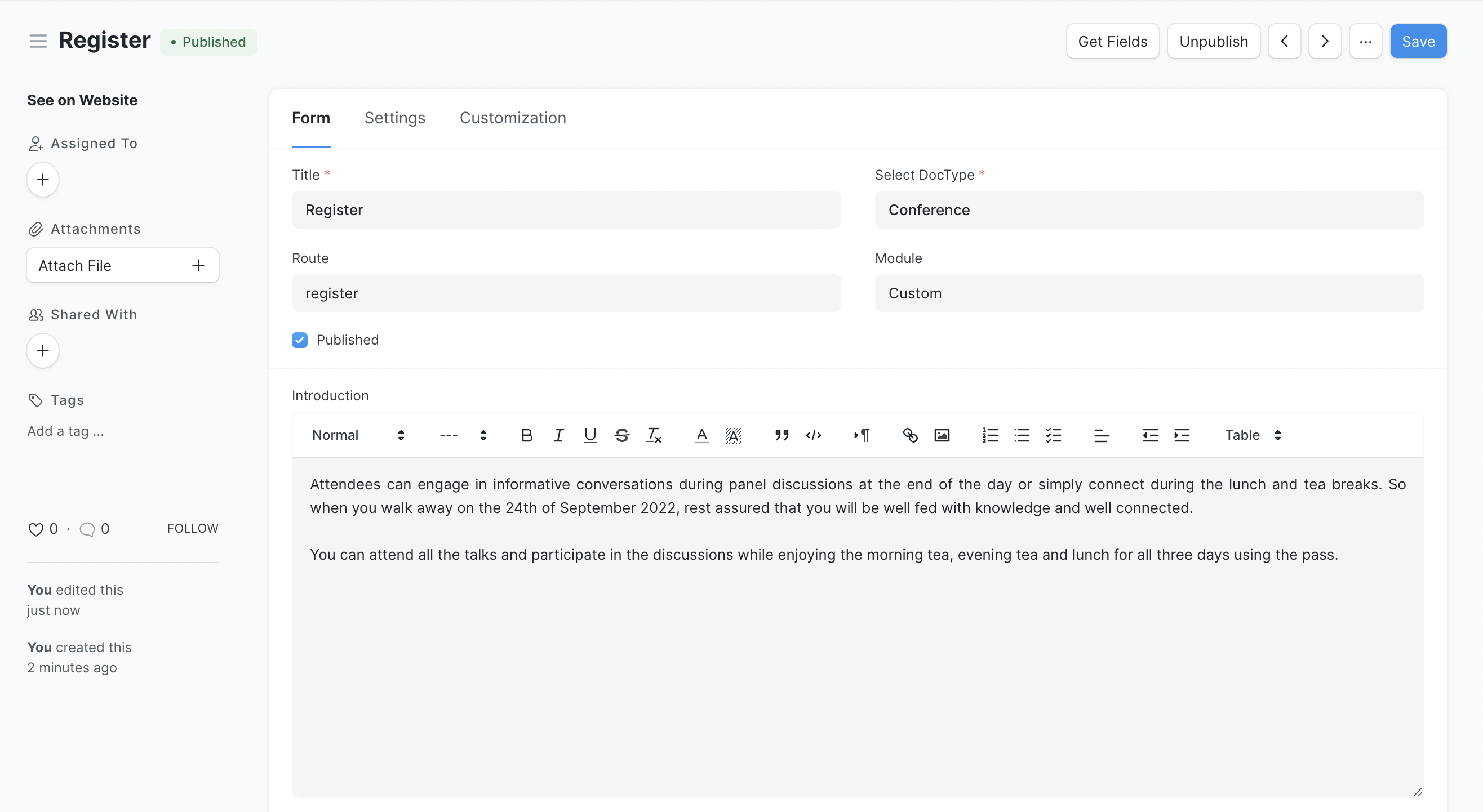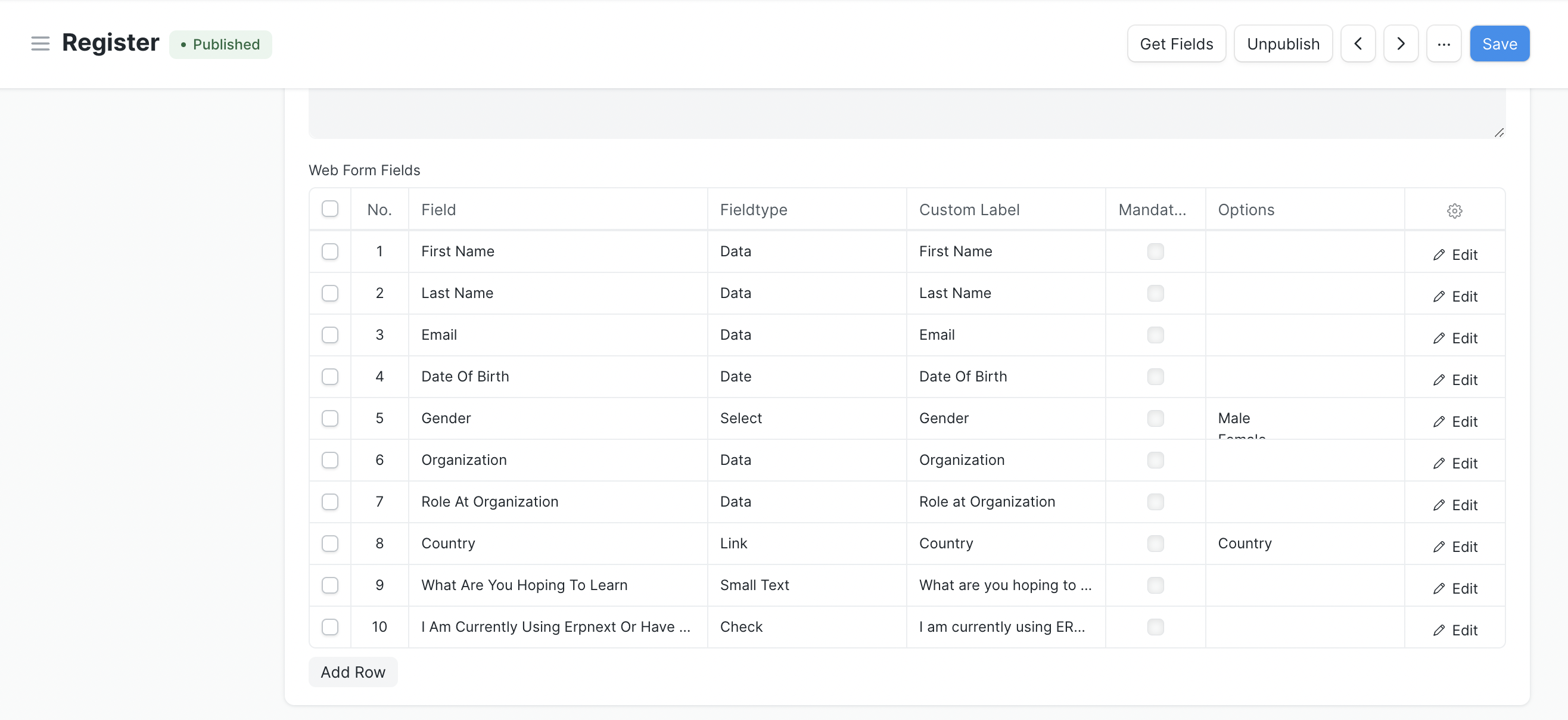Introduction
Welcome to this comprehensive guide, where we will delve into the technical functionalities of the Empress Web Form Generation feature in Empress. This feature provides developers with an efficient way to generate forms for their websites with minimal configuration. As developers, you can configure these forms to be public, allowing anyone to fill them, or require login for user-specific functionality.
Creating a Web Form
The process of creating a web form in Empress is simple and straightforward. Enter “new web form” in the search bar, commonly referred to as the awesomebar, and press enter. You will be directed to a new page where you will be required to:
- Enter the title of the web form.
- Select the DocType corresponding to the record that should be created.
- Optionally, add an introduction.
- Click the “Get Fields” button to retrieve all fields from the selected DocType or select fields for your web form manually.
- Publish your web form.
Below is an illustration of the web form creation interface:


Standard Web Forms
The Empress Web Form Generation feature allows you to create standard web forms by checking the “Is Standard” checkbox. Selecting this option creates a new folder in the module of the Web Form. This folder contains a .py and .js file, which you can use to configure the web form.
This is crucial in a development context because these files need to be checked into version control with your custom app. This means you can install your app on any site and it will have this web form installed, promoting efficient code integration and deployment.
Here is the code snippet for the “Is Standard” checkbox:
> `Is Standard` field will only be visible when you are in developer mode
User Roles and Permissions
In terms of user roles and permissions, the Empress Web Form Generation feature offers a high level of configurability. You can set the forms to be public or require login, ensuring that the right users have access to specific forms. This ties into system architecture and security considerations, as it allows for controlled data input and access.
Conclusion
In summary, the Empress Web Form Generation feature provides a powerful tool for developers to streamline the process of creating and deploying web forms. By simplifying form creation, integrating with version control systems, and offering flexible user access options, this feature significantly enhances the customization and development of business solutions within Empress.